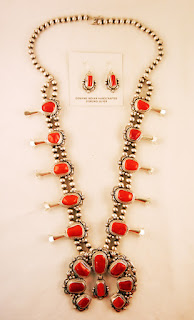Native American Treasures - Buy Beautiful Turquoise Jewelry Online
Native American Treasures Native American treasures refers to the items of personal adornment that indigenous people wear for personal use, traditions or sale for art. Native American jewelry reflects the history and culture of its Indian hand-makers. Different tribes cultivate distinct styles and aesthetics depending on the materials found on their land and personal visions and traditions within that tribe. Native American turquoise jewelry is prominent in the West as many of our nations Native American tribes are nearby. The Palms Trading Partnership Palms Trading is proud to be a part of the Native American treasure business and share Native American necklaces, earrings, bracelets, rings and pins as well as blankets and other Native American turquoise jewelry online with the world. We are humbled to bridge our talented artists with people who appreciate Native American jewelry and arts. What is Authentic Native American Jewelry? Authentic Native American jewelry is
